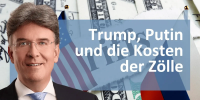U.S. stocks rebounded in January, a reprieve for investors who endured a challenging 2022. The rally for stocks was driven by investors’ increased confidence that interest rates may be near peak levels. The market is starting to price in the possibility that the Federal Reserve may soon pause rate hikes followed by interest rate cuts in the second half of 2023. As a result, riskier assets have benefitted from the rally, such as growth companies as well as stocks with high short interest. While general market sentiment improved, there is some caution on whether the move represented a real inflection point or yet another bear-market trap.
As January concluded, the market entered the busiest part of the Q4 earnings season. While only a portion of companies have reported thus far, management commentary remains conservative amid the uncertain demand backdrop. Despite lower earnings expectations, the tone of the market seemed to align more with soft-landing expectations than hard-landing scenarios.
On February 1st, the Federal Reserve announced a 25bps rate hike at the end of its two-day policy meeting, citing persistent inflation. This hike now brings the targeted federal funds rate to 4.50-4.75%, up from 0.00-0.25% prior to the initial increase in March 2022. The Fed anticipates that ongoing increases in the target range will be appropriate in order to return inflation to 2% over time. Fed Chair Jerome Powell said that the full effects of interest rate increases had yet to be felt, and that there was still more work to do. The next FOMC meeting is March 21st-22nd.
After almost three years, China reopened its borders on January 8th and ended a requirement for incoming travelers to quarantine, dismantling the last component of its stringent zero-COVID policy. Investors are optimistic that the reopening and recovery of the world’s second-largest economy should help spur a broader economic revival.
Merger arb performance in January was bolstered by deals that made significant progress towards closing. Shaw Communications (SJR/B CN-C$39.60-Toronto) and Rogers Communications were victorious defending their C$25 billion merger against the Canadian Competition Bureau in Canada’s Federal Court of Appeals. The parties now await approval from the Canadian Department of Innovation, Science and Economic Development, the final remaining approval before the deal can close. South Jersey Industries, Sierra Wireless, and Meridian Biosciences each received the final required regulatory approvals and the three deals closed in January. Deals announced in January including Evoqua Water Technologies’ $8 billion acquisition by Xylem, Magnet Forensics’ C$1 billion acquisition by Thoma Bravo, and CinCor Pharma’s $2 billion acquisition by AstraZeneca are creating new opportunities for investment.
Convertibles got off to a strong start in 2023 with the best month for performance since 2020, led by a number have factors, but generally the appetite for risk has increased to begin the year. Additionally, we have seen some of the worst performers from 2022 be the best performers YTD. A few of our fixed income equivalent holdings have benefited from a "credit delta" where an improved perception of a company's balance sheet and access to capital causes investors to bid up the bonds. The result has been one month returns that many investors were expecting for the entirety of 2023.
We continue to see opportunity in the convertible market this year. The fixed income equivalent issues still offer compelling yields to maturity even after the recent moves. Many of these bonds are the only debt on the balance sheet and have 3 to 4 years until maturity. We expect these bonds to accrete to par over time, building a solid foundation for performance. We have seen some companies address these bonds by buying them back in the open market or by offering an exchange for a new convertible. We anticipate more exchange offers as the year progresses. It is also likely that some convert issuers will be acquisition targets which would make their bonds puttable at par if the acquisition is for cash, or convertible into the acquiring company if shares are used. Either outcome should be desirable to convert owners.
New issuance continued to be anemic this month, but what did come saw significant demand with upsized deals pricing at the rich end of the price talk. We expect companies to use convertibles when raising capital this year to reduce interest expense and extend maturities in a covenant lite structure. We believe many companies have delayed coming to the market and converts offer an attractive way for companies to add low cost capital to their balance sheets. Continued issuance allows us to stay current and we expect to selectively layer new issues into our portfolio to maintain the asymmetrical risk profile we are seeking to achieve.
02/07/2023
Swiss Fund & Finance Platform




